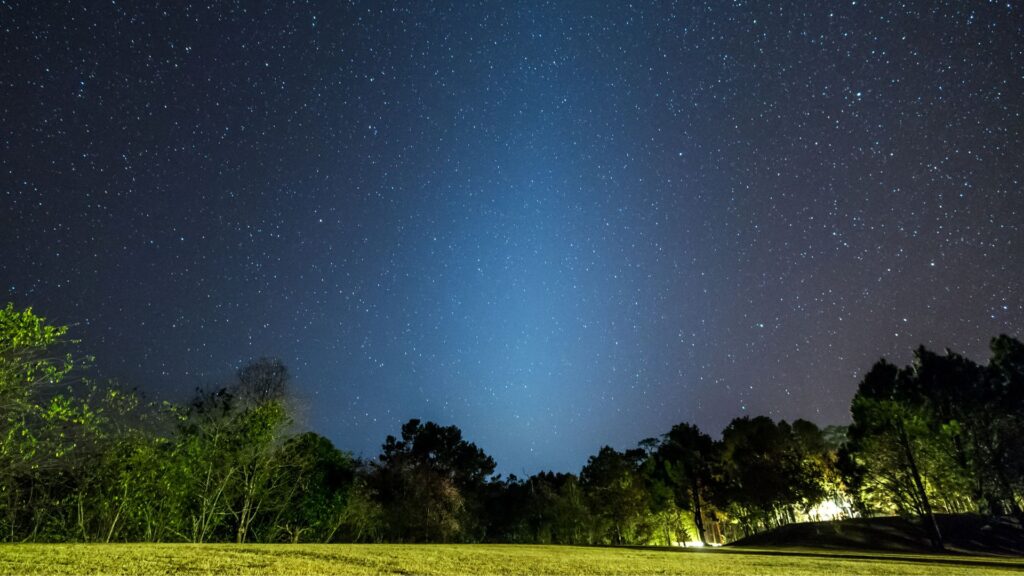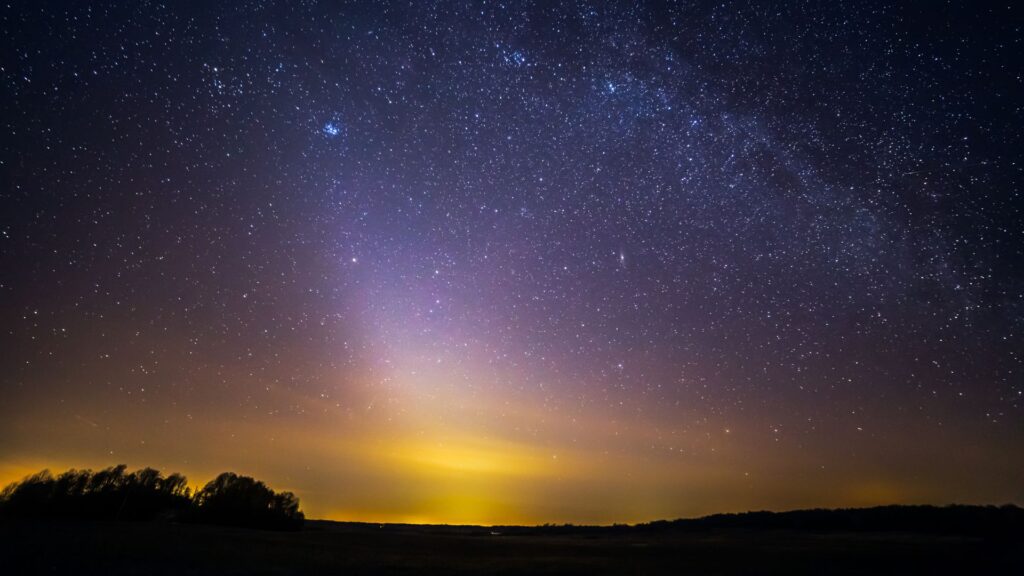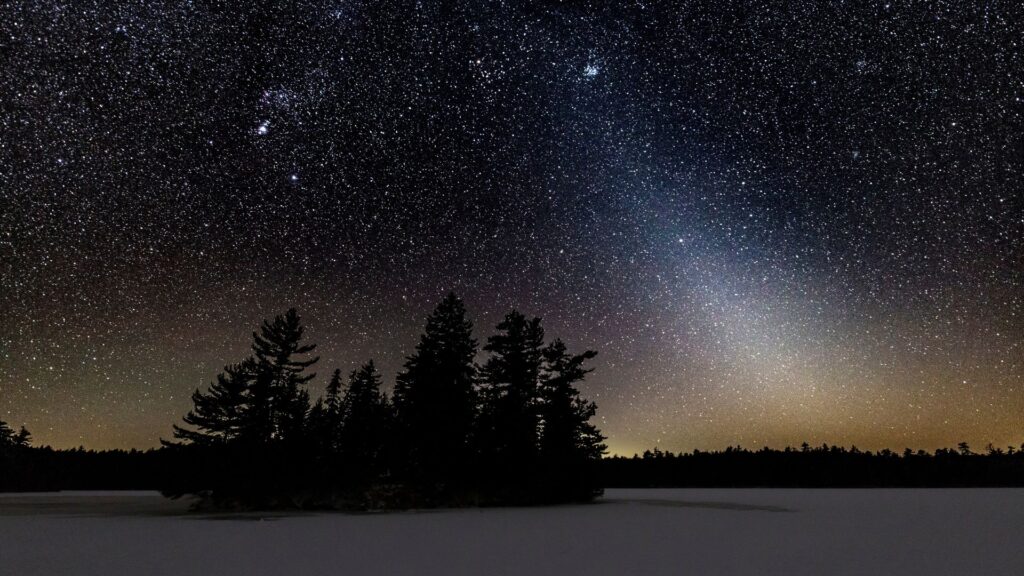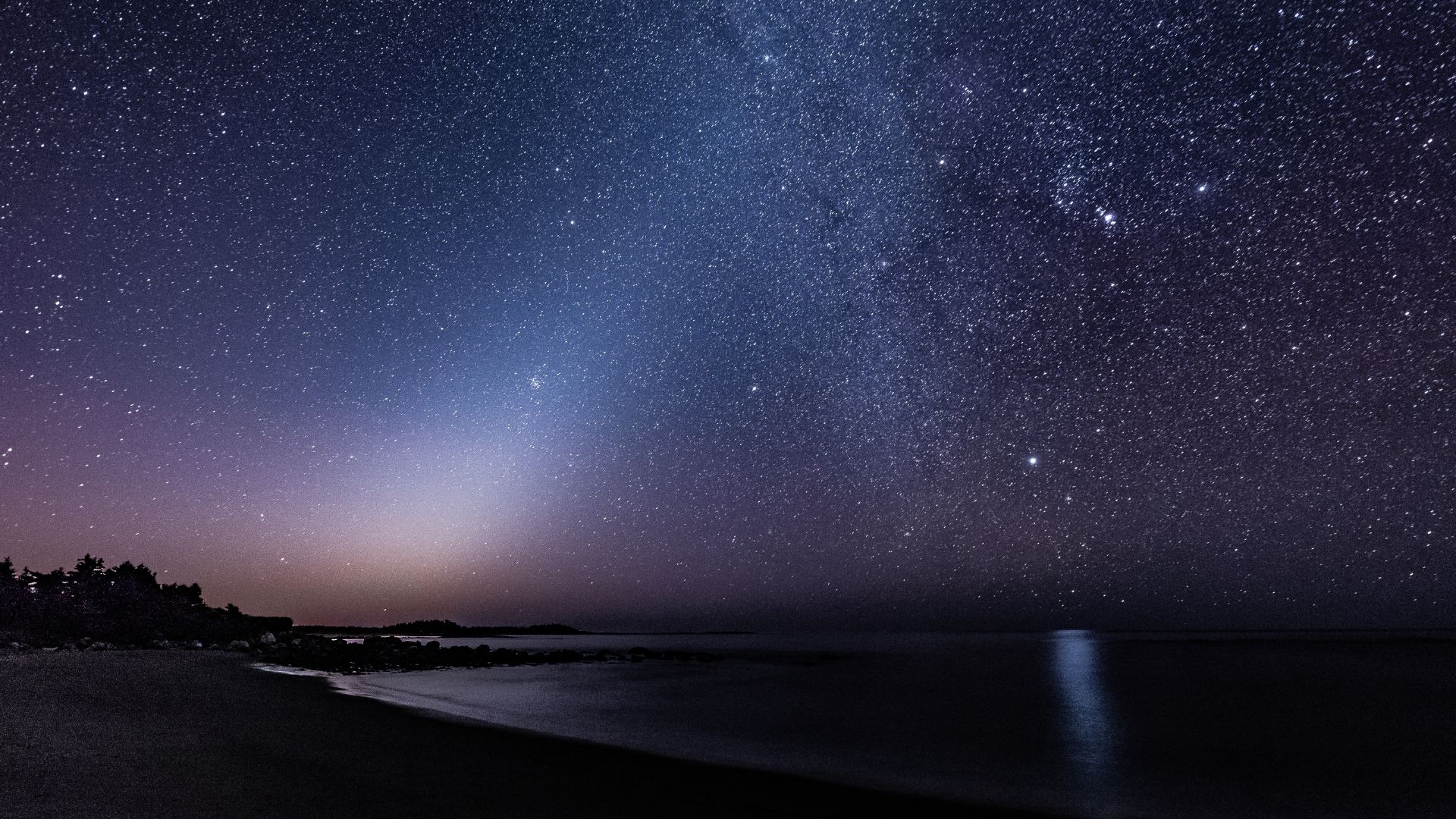Table of Contents:
- Introduction to Zodiacal Light
- Causes of Zodiacal Light
- When and Where to Observe Zodiacal Light
- Zodiacal Light vs. Other Sky Phenomena
- The Role of Zodiacal Light in Astronomy
- Frequently Asked Questions (FAQs)
Introduction to Zodiacal Light
Zodiacal light, also known as the false dawn, is a unique astronomical phenomenon that illuminates the night sky. It appears as a faint, cone-shaped glow extending from the horizon towards the zodiac constellations. Though often mistaken for the first light of dawn or dusk, this cosmic glow offers its own fascinating story. In this comprehensive article, we’ll delve into the causes of zodiacal light, when and where to observe it, how it differs from other sky phenomena, and its role in astronomy.

Causes of Zodiacal Light
Zodiacal light is caused by sunlight scattering off interplanetary dust particles found in the solar system. These dust particles, ranging from a few micrometers to a millimeter in size, form a thin cloud called the zodiacal dust cloud. This cloud is primarily concentrated along the ecliptic plane, which is the path traced by the sun, moon, and planets across the sky.
The origin of zodiacal dust particles:
- Collisions of asteroids: Most of the dust particles in the zodiacal dust cloud are remnants of asteroid collisions that occurred millions of years ago.
- Cometary debris: Comets also contribute to the zodiacal dust cloud. As comets travel near the sun, they heat up and release dust and gas, leaving behind a trail of debris.
- Planetary dust: A minor portion of the zodiacal dust originates from the planets themselves, mainly from their ring systems or volcanic activity.

When and Where to Observe Zodiacal Light
The best time to observe zodiacal light is during the pre-dawn hours in the eastern sky during the spring months and in the western sky during the evening hours in the fall months. The following table provides a rough guideline for the ideal months to view zodiacal light, based on your location in the Northern or Southern Hemisphere.
| Hemisphere | Spring | Fall |
|---|---|---|
| Northern | March-May | September-November |
| Southern | September-November | March-May |
Tips for successful zodiacal light observation:
- Choose a location with minimal light pollution, away from city lights.
- Pick a moonless night, as moonlight can make zodiacal light difficult to spot.
- Allow your eyes to adjust to the darkness for at least 20 minutes before attempting to observe zodiacal light.
- Use a star chart or a mobile app to locate the ecliptic plane, and follow the zodiac constellations to identify the region where zodiacal light may appear.
For a deeper dive into the mesmerizing world of atmospheric light displays, check out our article on Dancing Skies: A Guide to Atmospheric Light Phenomena, where you’ll learn about the science and beauty behind these breathtaking events.

Zodiacal Light vs. Other Sky Phenomena
Zodiacal light can be easily mistaken for other sky phenomena, such as the glow of the Milky Way, auroras, or artificial light pollution. Here are a few key differences to help you distinguish between these phenomena:
| Sky Phenomenon | Appearance | Location |
|---|---|---|
| Zodiacal Light | Faint, cone-shaped glow extending upwards from the horizon | Along the ecliptic plane in the east before dawn and in the west after dusk |
| Milky Way | Wide, diffuse band of light with a granular texture | Stretches across the entire sky, not limited to the ecliptic plane |
| Aurora | Colorful, dynamic curtains or arcs of light | Typically visible in high-latitude regions near the Earth’s magnetic poles |
| Light Pollution | A dome of orange or yellowish light near urban areas | Concentrated around cities and towns, with brightness decreasing as you move further away |

The Role of Zodiacal Light in Astronomy
Zodiacal light is not only a captivating celestial phenomenon but also holds significant importance in astronomy. Studying zodiacal light helps scientists understand the distribution and composition of interplanetary dust, providing insight into the formation and evolution of our solar system.
Key research areas involving zodiacal light:
- Exoplanet detection: Zodiacal light can interfere with the detection of exoplanets using the transit method, as the scattered sunlight can create false-positive signals. By understanding and modeling the effects of zodiacal light, astronomers can refine their techniques and improve the accuracy of exoplanet detection.
- Solar system formation: Analyzing the composition and distribution of zodiacal dust particles can offer clues about the processes that led to the formation of our solar system, as well as the early history of the planets and their interactions with the sun.
- Dust dynamics: The study of zodiacal light helps researchers understand the dynamics of interplanetary dust, including the forces that shape their motion and distribution, such as radiation pressure, solar wind, and gravitational interactions.
If you’re looking to enhance your astronomical observations, be sure to visit our article on the Best Telescopes of 2023, which provides a comprehensive guide to help you choose the perfect instrument for your stargazing adventures.
Frequently Asked Questions
Q: What causes zodiacal light?
A: Zodiacal light is caused by sunlight scattering off interplanetary dust particles in the solar system. These dust particles form a thin cloud called the zodiacal dust cloud, primarily concentrated along the ecliptic plane.
Q: When is the best time to observe zodiacal light?
A: The best time to observe zodiacal light is during the pre-dawn hours in the eastern sky during the spring months and in the western sky during the evening hours in the fall months.
Q: Can zodiacal light be seen from anywhere on Earth?
A: Zodiacal light can be observed from both the Northern and Southern Hemispheres, but the best viewing conditions are found in locations with minimal light pollution, away from city lights.
Q: Is zodiacal light harmful to human health or the environment?
A: Zodiacal light is a natural celestial phenomenon and poses no harm to human health or the environment. It is simply sunlight scattered by interplanetary dust particles in the solar system.
Q: How does zodiacal light impact astronomy?
A: Zodiacal light plays a role in astronomy by providing insight into the distribution and composition of interplanetary dust, which in turn helps scientists understand the formation and evolution of our solar system. It also influences the detection of exoplanets by causing false-positive signals, requiring astronomers to account for its effects in their research.
If you’re interested in exploring more fascinating atmospheric light phenomena, don’t miss our Informative Guide on Atmospheric Light Phenomena, where you can learn about various other captivating celestial displays.

